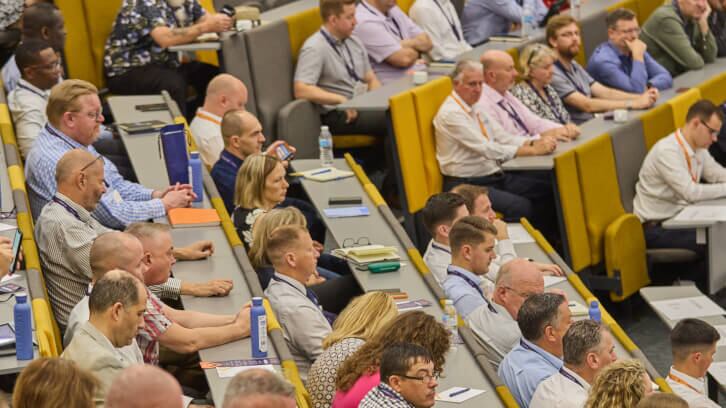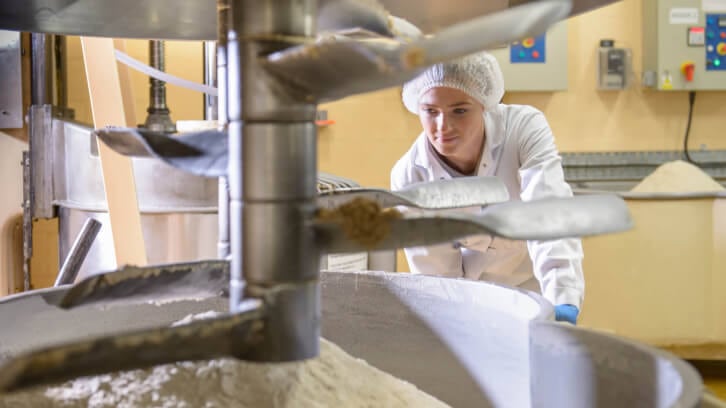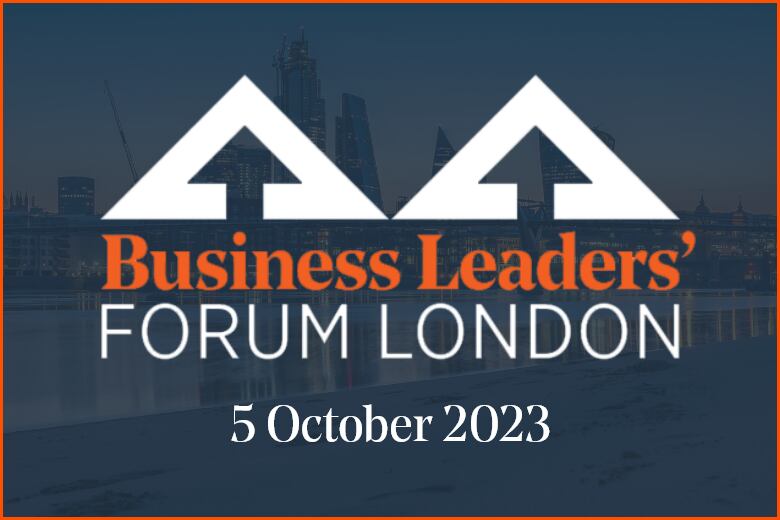Opening the forum, independent food safety consultant, Alec Kyriakides, gave a historic overview of how food risk has shaped our food safety regulations and controls and the important role technology will play in strengthening our response.
“The consumer risk is the same as it ever was, but we understand them better,” Kyriakides said.
“When you look at our ancestors, you can guarantee foodborne diseases were around since we walked the Earth. Egyptians and Romans were the forefathers of food crime, perhaps.
“The 1800s was probably when crime and adulteration were at their highest in the UK, with a number of big events occurring,” Kyriakides suggested, citing the Bradford sweets poisoning incident of 1858, wherein arsenic was accidentally added into confectionery, as an example.
“When I started my career in the 80s, it coincided with an extraordinary number of food crises – eggs and Salmonella, Listeria in ready meals, E.Coli in beef, botulism...” He added.
These notable moments have steered our legislative framework – albeit with less violent consequences than, for example, a medieval Turkey (circa 1400) ruling which mandated a baker giving false weight for his bread would have his ear nailed to his door.
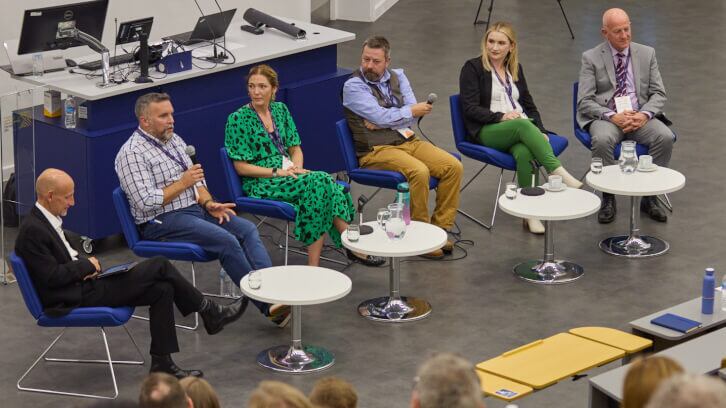
“High level controls didn’t exist before these incidents. The control we have now is phenomenal.
“Today, we have a very strong regulatory and enforcement environment and some of the most advanced analytical techniques and controls.
“So why do I say that consumer risk is still as present as it ever was? Because we have recent examples of people who have died, of food that has caused outbreaks, contaminated with undeclared allergens and chemicals. The system is overloaded with pressures and this is why these events happen.”
The recent pressures Kyriakides referred to are well known to the sector, from the challenges of Covid and conflict, to the impact of Brexit and inflation. However, he was cautiously optimistic that the future remains bright as a result of impressive technological advances. These solutions have been and will continue to help improve data analysis and predict risks in the future – a helpful attribute as events appear to be becoming more ferocious and widespread.
“Who knows when the next political instability will occur; what’s going to happen with climate change?” Kyriakides raised.
But for us to hold onto that hope and navigate our uncertain future, industry must embrace and invest in tech.
Innovation in cleaning
Innovation doesn’t just come in the form of statistics and predictive analysis, however, it is also in our design, as Katie Satterthwaite, M&S factory standards manager pointed out in her address.
While Satterthwaite noted investment into innovation is key, she affirmed that it needed to be well considered. For example, what’s the point in having great equipment if it is difficult to dismantle and clean?
“I still see hygienically designed equipment poorly installed,” she sighed. “Ineffective equipment caged off so that no one can get to it.”
She referenced 2018 Centers for Disease Control and Prevention (CDC) data to give the importance of cleaning further weight. This estimates there are 600m cases of foodborne disease globally each year leading to 420,000 deaths – that equates to 6% of all contamination being a consequence of equipment and environment, and around 20,000 deaths attributed to poor cleaning.
“Review your process for purchasing equipment; are you giving enough proactive consideration to it, so you’re not just buying cheap?” She advised. “Formulise your procurement process to result in better informed purchases based on risk assessment.”
Convincing that your department is worthwhile of investment is never an easy task, particularly in a moment of high inflation, so securing senior management buy-in is crucial. Building cleaning into your production plan can also help to factor in costs at the beginning and help avoid you asking for investment at a later date when budgets have been allocated.
For Duncalf, head of chemical technology at FoodClean, the future of hygiene and cleaning lies in automation.
Listing his reasoning, he told the audience: “When you’re cleaning you’re not producing product - and this costs you money; you want to be sustainable - you want to use the right amount of water and chemicals; you want to maintain food safety; you want to reach difficult to reach areas, you want to reduce human and chemical contact; and you want to reduce the variability in your cleaning.”
Most of the cleaning robots we’ll see in day-to-day life can be found in airports – big industrial machines which rely on sensors to navigate a space – and we’ve even started to see smaller consumer models in the home.
Although they can hoover or mop a floor whilst avoiding people, they are generally quite limited in their ability. However, Duncalf explained there is work being undertaken to develop machines which can replicate a human, designed to, for example, run up and down a manufacturing conveyor belt to spray inside the machinery.
But the design of such tools will need to be well thought through; with factories being fairly congested spaces, usually with many levels, robotic cleaners will need to be able to autonomously navigate these – and wheels perhaps won’t be the best thing for stairs!
“Are the reasons for automating food production any different for automating cleaning?” Duncalf reasoned.
He elaborated: “100 years ago, food manufacturing was completely different – it was a very manual process. After the wars, population numbers grew, and food had to keep up. Food safety was built into the food production process and at a reliable and predictable cost. But in most food factories, cleaning remains manual. So for the same reasons food production became automated, should cleaning follow?”
Workplace culture
With everything becoming digital, it might be easy to forget people. We’re being pushed so hard towards technological innovation that there is a risk we’ll begin to ‘leave it to the machines’. However, if we become complacent and don’t further our understanding of these technologies, we’ll create risk. We need to be able to work with these platforms to get insights and drive results – technology will never replace a functional food safety team. The future is about collaboration with technology – so called Industry 5.0.
But just as Satterthwaite explained that without considered installation, good equipment is redundant, similarly without sturdy foundations nothing can move forwards safely.
“The objective of any business is to be reliable and repeatable,” stated food safety consultant, Denis Treacy, chief executive officer at Culture Compass. “We boil this down to balancing four energies of repeatable and predictable outcomes – strategy, culture, performance and organisation.”
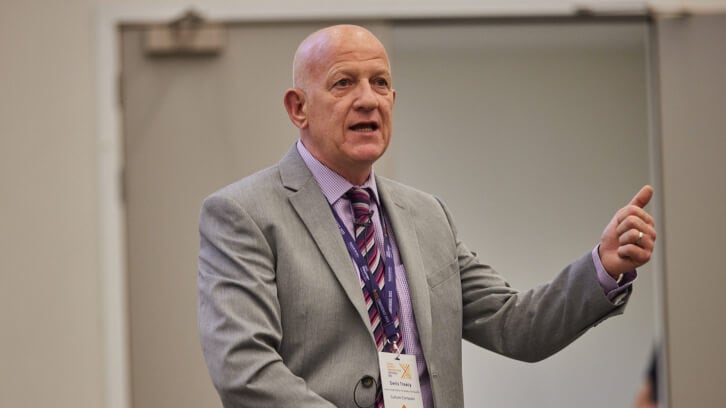
Focusing on culture, he explained that there are four states of “internal culture” – natural instincts, supervision, self and team. From first to latter, they move from being most reactive to most proactive; with a more proactive approach the goal.
“Being interdependent – this is having food safety culture, it manages itself without having to dictate the goal to people,” he said.
For Treacy, who has led many teams across his time in food & drink, including at United Biscuits and pladis Global, fear of failure must be avoided.
As he explained to the attendees, setting targets based on your shortcomings and failures will not drive long term results. Instead, food companies must measure themselves against benchmarks where they are not failing and get people thinking positively.
“You cannot get past ‘supervised’ if you measure yourself against failure,” he said, referring to the four energies model. “Fear of failure will never change culture or achieve predictable and repeatable actions.”
He concluded: “You can lose your audience by being negative. You need to create a vision of something wonderful or find a financial benefit.”
Enjoyed this article? You may also like our write-up on today's biggest threats to food and beverage manufacturers.


